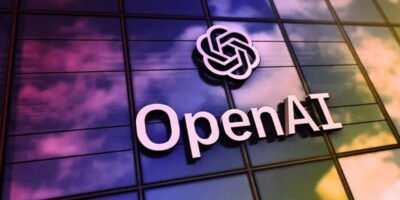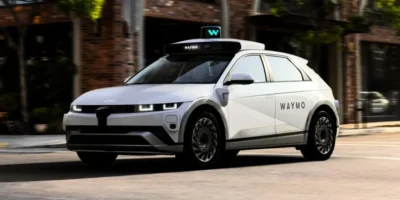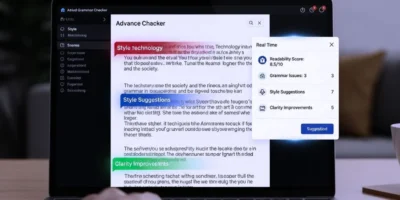The year 2023 will be remembered as the “Cambrian explosion” for artificial intelligence. It was the year that generative AI, powered by the awesome capabilities of Large Language Models (LLMs), burst forth from the confines of the research lab and into the global public consciousness. Tools like ChatGPT, Midjourney, and GitHub Copilot were not just technological curiosities; they were a profound and visceral demonstration of a new creative and cognitive force, a paradigm shift in our relationship with machines. The world watched, with a mixture of awe, excitement, and trepidation, as AI began to write, to code, and to dream in ways we had never thought possible.
But if 2023 was the year of the spectacular, chaotic, and brilliant explosion, then 2025 is shaping up to be the year of the great synthesis. The evolution of AI software in 2025 will be less about the shock of the new and more about the deep and pervasive integration of this new intelligence into the very fabric of our digital lives. The wild, untamed frontier is giving way to a new era of applied, industrialized, and increasingly autonomous intelligence. The story of AI in 2025 is not just about building bigger models; it is about building smarter, more efficient, more capable, and more trustworthy AI that is moving beyond a simple “prompt and response” tool to become a true collaborative partner, an autonomous agent, and the new, conversational interface for our entire digital world.
A Look in the Rearview Mirror: The Generative Tsunami That Set the Stage
To understand where AI software is headed in 2025, we must first appreciate the revolutionary foundations laid in the years immediately preceding it. The generative AI boom was not an overnight success but the culmination of decades of research, supercharged by three key ingredients: massive datasets, new model architectures (like the Transformer), and the exponential growth of computational power.
These breakthroughs converged to create a series of “iPhone moments” for AI that irrevocably changed the technological landscape.
The Rise of the Large Language Model (LLM): The Birth of the Conversational Engine
The launch and rapid iteration of models like OpenAI’s GPT-3.5 and GPT-4 were the defining events of the era. For the first time, a machine could understand and generate human language with a level of fluency, coherence, and general knowledge that was startlingly human-like.
LLMs became the foundational “reasoning engine” for a new generation of applications.
- From Niche Tool to Global Phenomenon: ChatGPT brought the power of LLMs to hundreds of millions of people, demonstrating their utility for everything from drafting emails and writing essays to debugging code and brainstorming ideas.
- The Scaling Laws: The prevailing wisdom, proven out by models like GPT-4, was that “scale is all you need.” By training ever-larger models on ever-larger datasets, a host of emergent, unpredictable capabilities would arise.
The Visual Revolution: Diffusion Models and the Democratization of Creativity
Running in parallel to the LLM revolution was an equally profound revolution in image generation, driven by a new class of models known as diffusion models.
Tools like Midjourney, Stable Diffusion, and DALL-E 2 turned simple text prompts into stunning, photorealistic, and artistically rich images.
- Text-to-Image Synthesis: This technology democratized visual creation on an unprecedented scale. Anyone could now become an “artist” or a “photographer,” able to conjure a specific image from the depths of their imagination simply by describing it in words.
- Beyond the Image: The principles of diffusion models were quickly extended to other modalities, showing promise for generating video, 3D models, and audio, setting the stage for the next wave of multimodal creativity.
The First Wave of Integration: From Chatbots to Copilots
The initial phase of the generative AI boom was about demonstrating the raw capabilities of these models, often through simple chatbot interfaces. The second, more impactful phase, which began in earnest in 2024 and is accelerating into 2025, is about deeply integrating these capabilities into the software we already use every day.
The concept of the AI “copilot” became the dominant metaphor for this new human-computer partnership.
- The Coding Copilot (GitHub Copilot): This was the first mainstream success story. By integrating an AI that could suggest and write entire blocks of code directly into the developer’s IDE, GitHub Copilot proved that AI could be a powerful, productivity-multiplying partner in a complex, professional domain.
- The Productivity Copilot (Microsoft 365 Copilot, Google Duet AI): The tech giants raced to embed generative AI into their productivity suites, creating copilots that could summarize long email threads, draft documents from a simple outline, create presentations from a Word document, and analyze spreadsheet data using natural language commands.
This was the state of play leading into 2025: a world that had been awakened to the power of generative AI, with the first generation of powerful copilots beginning to reshape the landscape of knowledge work. But this was just the overture. The symphony of 2025 is set to be far richer, more complex, and more autonomous.
The Core Evolutionary Trends of AI Software in 2025
The evolution of AI software in 2025 is not a single, monolithic trend but a convergence of several powerful, interconnected trajectories. The focus is shifting from raw generative power to a more nuanced, integrated, and capable form of intelligence.
These are the key evolutionary leaps that are defining the AI software landscape in 2025.
From Generative to Multimodal: The Synthesis of Senses
The first and most significant trend is the maturation of multimodal AI. The AI of the past was largely unimodal: it could understand text or images, but not both in a deeply integrated way. The AI of 2025 is a true polyglot, able to seamlessly understand, reason about, and generate content across a rich spectrum of data types.
This is about giving AI a more holistic, human-like understanding of the world by allowing it to perceive and communicate through multiple “senses.”
- What is Multimodality?: A true multimodal AI can accept a mixture of inputs (e.g., text, images, and audio) and produce a mixture of outputs. This is a huge leap beyond past text-to-image models.
- The Key Capabilities in 2025:
- Image and Video Understanding: An AI in 2025 can “watch” a video and provide a detailed summary, answer specific questions about what happened, or even write a script based on the visual action. A user can upload a picture of the inside of their refrigerator and ask the AI to suggest a recipe based on the ingredients it sees.
- Speech and Audio Integration: The AI can listen to a spoken conversation, transcribe it, and simultaneously perform a sentiment analysis or generate a real-time summary. The distinction between a language model and a speech model is disappearing.
- From Sketch to Creation: A user can draw a rough sketch of a website on a napkin, take a picture of it, and the AI can generate the HTML and CSS code for a functional website based on the sketch.
- The Impact of Multimodality: This is not just a technical curiosity; it is a revolution in the user interface. It will make our interaction with AI far more natural, intuitive, and powerful. It is the key that will unlock a new generation of applications in areas such as education (an AI that can explain a textbook diagram), accessibility (an AI that can describe the world to a visually impaired person), and creative design. Models like Google’s Gemini and the latest iterations of OpenAI’s GPT are at the forefront of this trend.
The Dawn of the Autonomous Agent: AI That Takes Action
If the “copilot” was the defining metaphor of 2024, the “autonomous agent” is the defining concept of 2025. A copilot assists you with a task; an agent performs the task for you.
This is a monumental shift from AI as a passive tool for generating content to AI as an active, goal-oriented system that can interact with the digital world on the user’s behalf.
- The Anatomy of an AI Agent: An AI agent is a system that uses a large language model as its core “reasoning engine” or “brain.” This brain is given:
- A high-level goal or objective from a human user.
- Access to a set of “tools,” which are typically APIs for other software and services.
- The ability to create and execute a multi-step plan to achieve its goal.
- The “Plan and Execute” Loop: An agent works in a loop. It first breaks down the user’s goal into a series of logical steps. It then chooses the right tool for the first step (e.g., the Google Search API to find information). It executes the tool, observes the result, and then uses that new information to decide the next step, continuing the “plan-and-execute” loop until the goal is achieved.
- The Market Opportunities in 2025:
- Personal Agents: The first wave of consumer-facing AI agents will act as intelligent personal assistants. You could give an agent a goal like: “Find me a flight to San Francisco for next Tuesday, book a hotel near the conference center for three nights, and add it all to my calendar.” The agent would then interact with the airline’s, the hotel’s, and your calendar’s APIs to complete the task autonomously.
- Enterprise Agents: In the enterprise, agents will automate complex business workflows. An agent could be tasked with “creating the monthly sales report,” which would involve pulling data from Salesforce, analyzing it in a spreadsheet, generating a series of charts, and drafting a summary document.
- Software Development Agents: The coding copilot is evolving into an agent. A developer could give an agent a high-level feature request, and the agent could write the code, create the necessary tests, run them, and even submit the code for review, all with minimal human intervention. While the early prototypes of 2023 (like Auto-GPT) were brittle and unreliable, the agent frameworks of 2025 are becoming far more robust and commercially viable.
The “Small Model” Renaissance: Efficiency, Specialization, and the Edge
For the past few years, the dominant narrative in AI has been “bigger is better.” But 2025 is seeing a powerful counter-trend: the rise of small, specialized, and highly efficient AI models.
The industry is realizing that a one-size-fits-all, giant-brain-in-the-cloud model is not the right solution for every problem. There is a growing demand for models that are cheaper to run, faster, and capable of operating across a wider range of environments.
- The Drivers of the Small Model Trend:
- Cost: Running inference on a massive, billion-parameter model in the cloud is expensive. For high-volume applications, the cost can be prohibitive.
- Speed and Latency: For real-time applications, the round-trip latency to a remote cloud server can be too high.
- Privacy and Data Security: For applications that handle sensitive personal or corporate data, there is a strong desire to process that data locally, without sending it to a third-party cloud.
- Offline Capability: Many applications need to function even when disconnected from the internet.
- The Technologies of Efficiency: This trend is enabled by a host of new techniques for creating smaller models without catastrophic performance loss. This includes:
- Distillation: The process of using a large, powerful “teacher” model to train a smaller, more compact “student” model.
- Quantization: Reducing the numerical precision of the model’s weights to make it smaller and faster.
- The Rise of Specialized Open Source Models: A vibrant open source ecosystem is now producing a huge number of smaller, specialized models that are fine-tuned for specific tasks (like summarization, sentiment analysis, or code generation in a specific language), which can often outperform a giant, general-purpose model on that narrow task.
- The Edge AI Revolution: The ultimate expression of this trend is Edge AI. This is the practice of running AI models directly on the end device—the smartphone, laptop, car, smart speaker, or factory sensor. The new generation of processors for these devices now includes dedicated neural processing units (NPUs) specifically designed to run smaller, more efficient models with incredible performance and low power consumption. By 2025, a significant amount of AI inference will shift from the cloud to the edge.
Generative AI Becomes the New “UI”: The Conversational Interface is Everything
The user interface (UI) of software is undergoing its most profound transformation since the invention of the GUI. The primary way we will interact with complex software is no longer through menus, buttons, and forms, but through natural, conversational language.
In 2025, the AI-powered conversational interface will become the new, universal front-end for a huge range of applications.
- From Clicks to Conversation: Instead of navigating a complex business intelligence (BI) tool to build a report, a business user in 2025 can type or speak: “Show me the year-over-year sales growth for our top three products in the European market, and visualize it as a bar chart.” The AI will understand the intent, query the underlying database, generate the visualization, and present it to the user.
- The “Copilot” in Every App: Nearly every major enterprise and consumer software application in 2025 has its own “copilot” or conversational assistant. This AI layer acts as an intelligent intermediary, translating the user’s natural-language goals into the specific actions and commands the underlying software can understand.
- The Impact on UX Design: This is forcing a fundamental rethinking of user experience (UX) design. The role of the UX designer is shifting from designing the perfect visual layout of buttons and menus to designing the perfect conversation, crafting the “personality” of the AI assistant, and ensuring that the interaction is intuitive, trustworthy, and effective.
The Engine Room: The Evolving Infrastructure and Tooling for AI
The rapid evolution of AI software is enabled and supported by an equally rapid evolution in the underlying infrastructure and tooling used to build, deploy, and manage these intelligent systems.
This is the “engine room” of the AI revolution, a space of intense innovation and a massive market opportunity in its own right.
MLOps Matures into AIOps: The Industrialization of the AI Lifecycle
The discipline of MLOps (Machine Learning Operations), which brings the rigor of DevOps to the machine learning lifecycle, is maturing into a more comprehensive and intelligent discipline: AIOps (AI for IT Operations).
This is about using AI to manage the increasingly complex process of building and operating AI at scale.
- The Full-Stack AI Platform: The fragmented toolchain of the past is being consolidated into integrated, end-to-end AI platforms. These platforms provide a unified set of tools for the entire AI lifecycle, from data preparation and model training to deployment, monitoring, and governance.
- Automating the AI Factory: AI is being used to automate every step of the process. AutoML (Automated Machine Learning) tools can automatically select the best model architecture and tune its hyperparameters. AIOps tools can automatically monitor the performance of a deployed model in production, detect “data drift” (when real-world data diverges from the training data), and even trigger retraining and redeployment.
The Rise of the Vector Database: The Memory of the AI Brain
A key piece of new infrastructure that has become essential in the generative AI era is the vector database.
To understand this, we must first understand vector embeddings. A vector embedding is a numerical representation of a piece of data (like a word, a sentence, or an image) that captures its semantic meaning. Generative AI models are exceptionally good at generating these embeddings.
- The Need for Semantic Search: A vector database is a specialized database designed to store and search vector embeddings. This allows for a powerful new kind of “semantic search” or “similarity search.” You can find things based on their meaning, not just their keywords.
- The Key Use Case: Retrieval-Augmented Generation (RAG): The biggest problem with LLMs is that they are prone to “hallucinating” (making things up) and their knowledge is limited to the data they were trained on. RAG is a powerful technique that solves this problem.
- How RAG Works: When a user asks a question, the system first uses a vector database to find the most relevant, up-to-date information from a private, trusted knowledge base (such as a company’s internal documents or a product’s technical documentation). This relevant information is then “stuffed” into the prompt that is sent to the LLM.
- The Impact: This forces the LLM to base its answer on the provided, factual information, dramatically reducing hallucinations and allowing the AI to answer questions about proprietary, up-to-the-minute data. Vector databases, from companies like Pinecone, Weaviate, and Chroma, have become a critical component of nearly every serious enterprise generative AI application in 2025.
AI in Software Development: The Self-Improving System
The role of AI in the software development lifecycle itself is evolving far beyond the simple “copilot” that suggests code.
In 2025, AI will become an active participant in the entire process of building, testing, and maintaining software.
- AI-Generated Tests: AI can now analyze new code and automatically generate a comprehensive suite of unit tests, dramatically improving code quality and test coverage.
- Automated Debugging and Refactoring: When a test fails or a bug is reported, an AI agent can be tasked with identifying the root cause and even proposing a fix, which a human developer can then review. AI is also becoming capable of analyzing a legacy codebase and suggesting, or even automatically performing, “refactoring” to make it more modern, efficient, and maintainable.
- AI for System Design: The next frontier is using AI to support high-level system design and architecture for new software. An architect could describe the requirements of a new system in natural language, and the AI could generate a proposed architecture diagram, suggest the best microservices to use, and even create the initial code scaffolding.
The Ripple Effect: How Evolved AI Software Will Reshape Industries in 2025
The evolution of AI software is not happening in a vacuum. These new capabilities are the catalysts for a new wave of disruption and value creation across every major global industry.
By 2025, the impact of this new, more capable AI is no longer a promise for the future; it is a tangible, bottom-line reality.
Hyper-Personalization at Scale in Commerce and Media
The multimodal and agentic capabilities of AI are enabling a new level of “hyper-personalization” that goes far beyond simple product recommendations.
- The AI Shopping Assistant: A customer in 2025 can interact with an AI shopping agent that acts as a personal stylist. The user could upload a photo of an outfit they like, and the agent could find similar items, show them how those items would look on a virtual avatar of the user, and then complete the purchase.
- Dynamically Generated Media: Media and entertainment companies are using generative AI to create personalized content at scale. This could be a personalized news summary tailored to an individual’s interests, delivered in a synthetic but realistic voice, or even a children’s story in which the child is the main character.
The Augmented Professional: Redefining Knowledge Work
For knowledge workers like lawyers, doctors, financial analysts, and consultants, the AI of 2025 is a true “cognitive partner.”
- The “AI Junior” for Every Professional: A lawyer can use an AI agent to perform the initial, time-consuming legal research for a new case, summarizing relevant case law and identifying key precedents. A doctor can use an AI to analyze a patient’s medical history and the latest clinical research to suggest a differential diagnosis. This frees up the human professional to focus on the high-level strategic thinking, the client relationship, and the final, critical judgment.
Accelerated Scientific Discovery and R&D
The ability of AI to find patterns in complex, high-dimensional data is having its most profound impact in science and R&D.
- AI-Driven Drug and Materials Discovery: As we have seen, AI is accelerating the discovery of new drugs and the design of new materials by predicting the properties of novel molecules in silico.
- The AI Lab Assistant: In the lab, an AI can analyze data from experiments in real time and suggest the next, most promising experiment to run, creating a closed-loop, automated system for scientific discovery.
The Autonomous Factory and Supply Chain
The fusion of AI software with robotics and IoT is creating the fully autonomous, self-optimizing industrial world of Industry 4.0.
- The “Lights-Out” Factory: In the smart factory of 2025, AI agents are responsible for managing the production schedule, optimizing the flow of autonomous mobile robots (AMRs), and using predictive analytics to schedule maintenance before a machine ever breaks down.
- The Self-Driving Supply Chain: The entire supply chain — from demand forecasting and inventory management to the dispatching of autonomous trucks and delivery drones — is orchestrated by a central AI “control tower.”
The Brakes on the Rocket Ship: Navigating the Challenges and Headwinds of 2025
The pace of AI evolution is breathtaking, but the path forward is not without significant friction. The year 2025 is also a year of grappling with the profound technical, ethical, and societal challenges created by this powerful new technology.
These challenges are acting as necessary and powerful “brakes” on the AI rocket ship, forcing a shift from a “move fast and break things” ethos to a more mature, responsible approach.
The Governance Gauntlet: Regulation, Ethics, and the Rise of “Responsible AI”
The “Wild West” era of AI development is definitively over. Governments around the world are now implementing the first wave of comprehensive AI regulations.
- The Regulatory Landscape: The EU AI Act, which takes a risk-based approach to regulating AI systems, is becoming a global standard (the “Brussels Effect”). The U.S. has issued its own Executive Order on AI, and countries around the world are developing their own national AI strategies and regulations.
- The Business Imperative of “Responsible AI”: In 2025, having a “Responsible AI” framework is no longer a “nice-to-have” for the corporate social responsibility report; it is a non-negotiable business and legal necessity. This involves establishing clear governance and processes for ensuring that AI systems are:
- Fair and Unbiased: Actively auditing models for and mitigating harmful biases.
- Transparent and Explainable: Moving beyond the “black box” to provide a degree of explainability for how an AI makes its decisions, especially in high-stakes domains.
- Secure and Robust: Protecting models from new types of attacks, like data poisoning and adversarial examples.
- Accountable: Having clear lines of human accountability for the outcomes of an AI system.
The Hallucination Problem and the Quest for Factual Grounding
Despite their incredible progress, the LLMs at the heart of generative AI still have a fundamental problem: they are prone to “hallucinating”—confidently making up facts and presenting them as truth. For creative applications, this can be a feature. For enterprise applications that require factual accuracy, it is a deal-breaker.
The year 2025 is a year of intense focus on solving this problem through techniques such as Retrieval-Augmented Generation (RAG) and on maintaining a “human in the loop” for critical decisions.
The Computational and Environmental Cost
Training massive, state-of-the-art AI models is an incredibly energy-intensive process with a significant environmental footprint. This is creating a powerful incentive for the “small model” trend and a new wave of innovation in more energy-efficient AI-specialized hardware.
The Ever-Widening Skills Gap and the Human-AI Partnership
The rapid evolution of AI is creating a massive skills gap. There is a huge shortage of talent with the skills to build, manage, and effectively use these new AI systems. At the same time, the workforce as a whole needs to be rapidly reskilled to work with their new AI co-pilots and agents. In 2025, corporate investment in AI training and workforce transformation will become a top-level strategic priority.
Conclusion
The evolution of artificial intelligence software in 2025 is a story of maturation. The raw, explosive power of the generative AI boom is being channeled, refined, and woven into the very fabric of our digital existence. The defining trends of this new era—multimodality, agency, efficiency, and deep integration—are all part of a larger shift. We are moving from a relationship in which we are the masters and the AI is the tool to a new and more profound reality: a symbiotic partnership between human and machine intelligence.
The AI of 2025 is becoming a true collaborator—an intelligent agent that can act on our behalf—and the new, conversational fabric through which we will interact with our entire digital world. The journey ahead is still long, and the challenges of governance, safety, and societal adaptation are immense. But the direction of travel is clear. We are moving from the age of “artificial” intelligence to a new age of “applied,” “ambient,” and “augmented” intelligence. The sentient symphony is just beginning to play, and it is a composition that will redefine our world in ways we are only just starting to comprehend.












